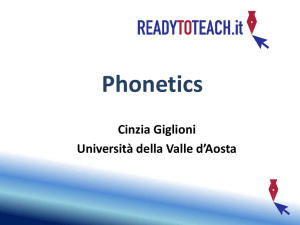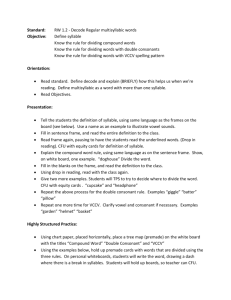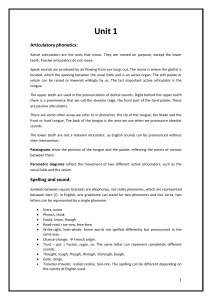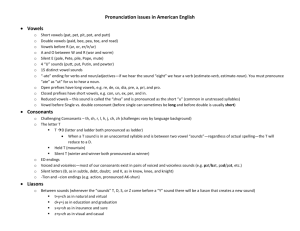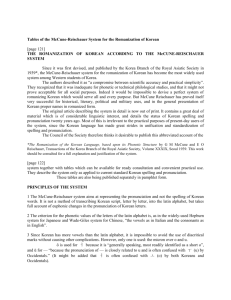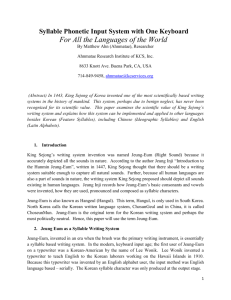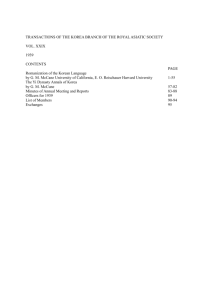vowelsAndConsonants
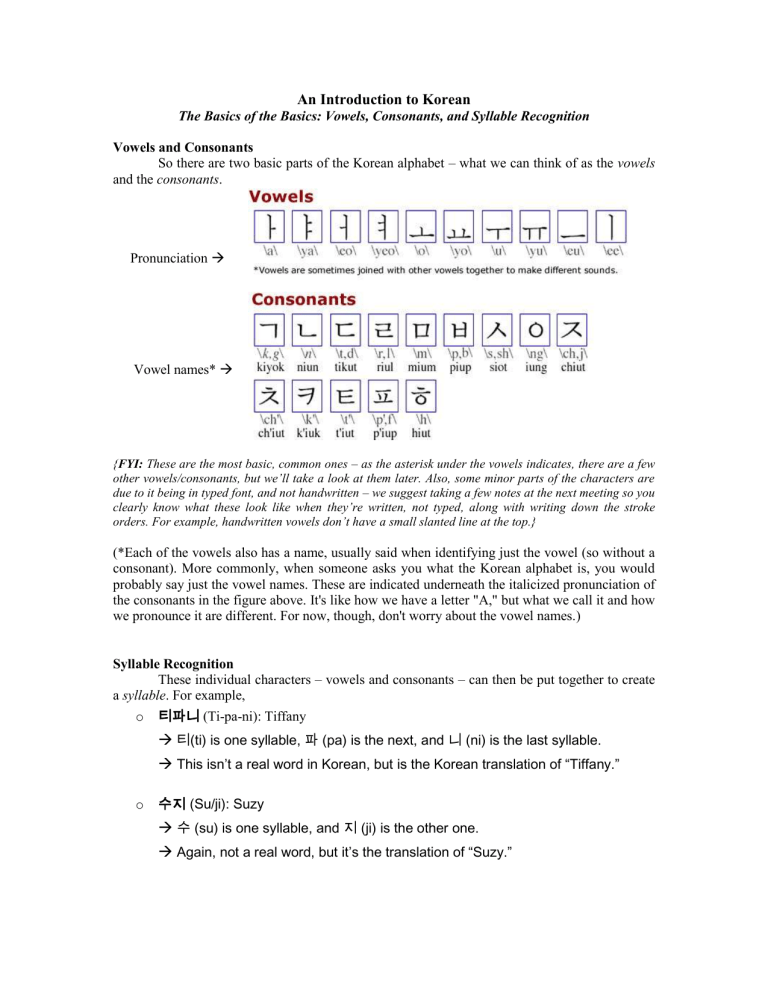
An Introduction to Korean
The Basics of the Basics: Vowels, Consonants, and Syllable Recognition
Vowels and Consonants
So there are two basic parts of the Korean alphabet – what we can think of as the vowels and the consonants .
Pronunciation
Vowel names*
{FYI: These are the most basic, common ones – as the asterisk under the vowels indicates, there are a few other vowels/consonants, but we’ll take a look at them later. Also, some minor parts of the characters are due to it being in typed font, and not handwritten – we suggest taking a few notes at the next meeting so you clearly know what these look like when they’re written, not typed, along with writing down the stroke orders. For example, handwritten vowels don’t have a small slanted line at the top.}
(*Each of the vowels also has a name, usually said when identifying just the vowel (so without a consonant). More commonly, when someone asks you what the Korean alphabet is, you would probably say just the vowel names. These are indicated underneath the italicized pronunciation of the consonants in the figure above. It's like how we have a letter "A," but what we call it and how we pronounce it are different. For now, though, don't worry about the vowel names.)
Syllable Recognition
These individual characters – vowels and consonants – can then be put together to create a syllable . For example, o 티파니
(Ti-pa-ni): Tiffany
티(ti) is one syllable, 파 (pa) is the next, and 니 (ni) is the last syllable.
This isn’t a real word in Korean, but is the Korean translation of “Tiffany.” o 수지 (Su/ji): Suzy
수 (su) is one syllable, and 지 (ji) is the other one.
Again, not a real word, but it’s the translation of “Suzy.”
o 드라마 (dd/ra/ma): drama
Below is a diagram of the word
한국어 (han/guk/uh), which means the Korean language.
The last syllable illustrates the simplest combination – one consonant and one vowel.
The first two syllables each consist of two consonants and one vowel.
The most consonants any single syllable can have is three – one on the top left, two on the bottom – and the most vowels it can have is just one . But don't worry, these are fairly rare. o
읽다
(Ilk-da): to read o 닭
(dak): chicken
{FYI: Most combinations of consonants and vowels are valid – that is, if you closed your eyes and just randomly pointed to a pair of them, they'd probably be used somewhere in the Korean language. However, some are not used! But there is no need to memorize them because you will never need them, and you will never encounter them anyways. Just don’t go off making up weird combinations that don’t exist!}
Well, okay, that's pretty much it! If you know the vowels and consonants, and how to write them relative to each other to make a syllable, you'll be able to master much of Korean!
Plus, we’ll make sure to practice a lot of syllable recognition at the club meetings, so you can actually see if you’re on the right track.
Suggestion: Practice testing yourself on the pronunciation of Korean by finally trying a hand at the
Korean lyrics to K-Pop songs! Even if you don’t totally understand all of the words, practice recognizing each combination of characters – though we don’t recommend checking yourself against the singers, since they usually sing differently than from when they talk. ^_^



